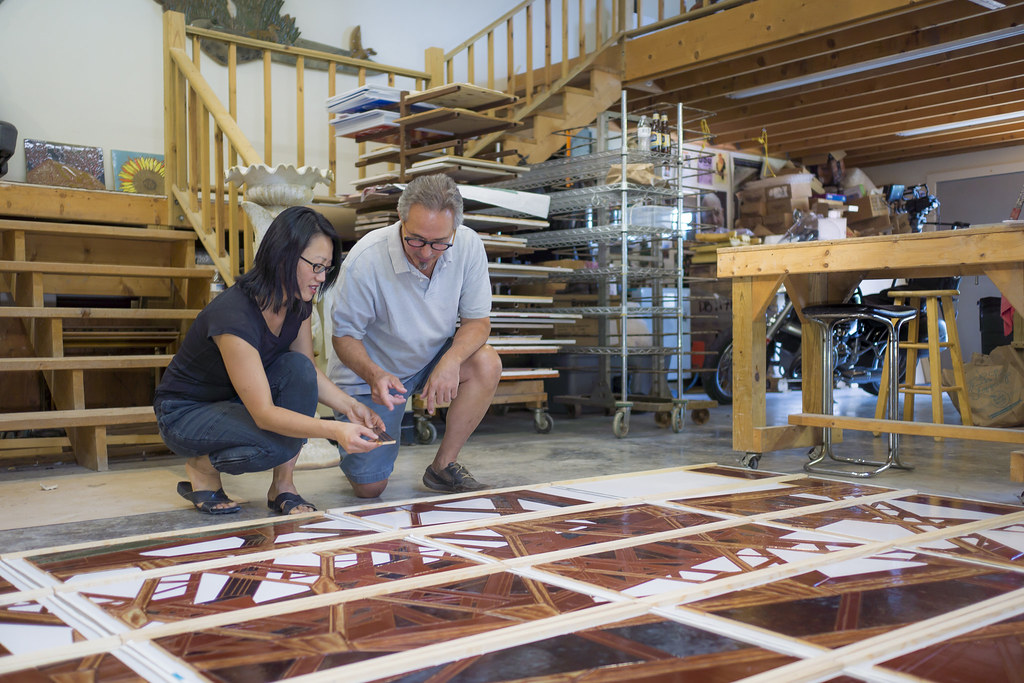Transform your space with a professionally installed raised platform that creates stunning visual impact while solving multiple flooring challenges. A well-designed raised platform can revolutionise any room, offering practical solutions for uneven surfaces while creating stunning visual features that enhance your property’s value.
Understanding Raised Platforms: More Than Just Elevation
Raised platforms have evolved far beyond their basic functional roots to become sophisticated design elements in modern architecture. These versatile structures, which have seen a 35% increase in residential applications since 2023, serve multiple purposes in both commercial and residential settings. At their core, raised platforms create an elevated surface that can transform ordinary spaces into striking focal points while solving various practical challenges. The beauty of raised platforms lies in their ability to seamlessly integrate with existing architecture while providing practical benefits such as improved insulation, easier utility management, and enhanced spatial definition.
Why Choose a Raised Platform for Tiling?
- Enhanced Visual Impact: Create dramatic level changes and defined zones in open-plan spaces
- Surface Solutions: Effectively address uneven floors and structural irregularities
- Improved Insulation: Add an extra layer of thermal and acoustic protection
- Utility Management: Conceal pipes, cables, and other services while maintaining easy access
- Design Flexibility: Enable creative lighting solutions and unique spatial arrangements
- Property Value: Add a premium feature that can increase property value by up to 15%
Essential Planning and Preparation
Successful raised platform installation begins with thorough planning. First, assess the structural integrity of your existing floor – it must support both the platform and its intended use. Calculate loads carefully, considering that a typical tiled platform can weigh 40-50 kg per square metre. Moisture protection is crucial; incorporate a damp-proof membrane and ensure adequate ventilation to prevent issues like dry rot. Height calculations must account for finished floor levels, door clearances, and building regulations, which typically require a minimum ceiling height of 2.3 metres above the platform.
Step-by-Step Construction Guide
- Base Framework: Install pressure-treated timber bearers at 400mm centres
- Support Structure: Add cross-bracing and additional supports for heavy load areas
- Platform Surface: Fit moisture-resistant flooring grade chipboard or plywood
- Waterproofing: Apply appropriate tanking systems in wet areas
- Tile Preparation: Install tile backer board and waterproof membrane where necessary
Platform Types and Materials
Modern raised platforms offer various construction options to suit different applications. Solid top platforms, constructed with moisture-resistant chipboard or plywood, provide excellent stability for tiled surfaces. Grid top platforms, increasingly popular in commercial settings, offer superior ventilation and service access. Adjustable systems, which have seen a 40% uptake increase in 2024, allow for perfect levelling and height adjustment. Material selection should consider factors like load-bearing requirements, moisture exposure, and maintenance needs.
Professional Installation Tips
Achieving a perfect finish requires attention to detail and professional expertise. Use laser levels for precise alignment, ensuring a maximum deviation of 2mm over 2 metres. Install expansion joints at 4-5 metre intervals and around the perimeter to accommodate thermal movement. Consider access requirements by incorporating removable panels at strategic points. For wet areas, maintain a minimum fall of 1:80 towards drainage points.
Common Applications and Design Ideas
- Kitchen Islands: Create defined cooking and preparation zones
- Bathroom Installations: Conceal plumbing while creating spa-like features
- Commercial Displays: Design eye-catching retail presentations
- Outdoor Spaces: Build weather-resistant entertaining areas
- Room Dividers: Define spaces without solid walls
Maintenance and Long-term Care
Proper maintenance ensures your raised platform’s longevity. Conduct quarterly inspections of support structures and check for any signs of moisture ingress. In commercial settings, schedule professional structural assessments annually. Monitor joint integrity and address any loose tiles promptly. With proper care, a well-constructed raised platform can maintain its structural integrity for 15-20 years.
Transform Your Space with Expert Help
Creating the perfect raised platform requires expertise, precision, and attention to detail. At Bromley Tilers, we bring over two decades of experience in designing and installing raised platforms across Bromley and Kent. Our professional team understands the unique challenges of each project and delivers solutions that combine stunning aesthetics with practical functionality. Contact us today to discuss your raised platform project and discover how we can transform your space with our expert tiling services.
For complex raised platform projects or buildings with structural uncertainties, professional surveying services like those offered by AJ Digital can provide precise 3D laser scanning and detailed measurements to ensure accurate planning and eliminate costly construction errors. These advanced surveying techniques are particularly valuable when working with older properties or intricate installations where precise floor level assessments are critical.
FAQ
What is an elevated platform called?
An aerial work platform (AWP), also an aerial device, aerial lift, boom lift, bucket truck, cherry picker, elevating work platform (EWP), mobile elevating work platform (MEWP), or scissor lift, is a mechanical device used to provide temporary access for people or equipment to inaccessible areas, usually at height.
What do you call a raised platform in a room?
A dais or daïs (/ˈdeɪ. əs/ or /ˈdeɪs/, American English also /ˈdaɪ. əs/ but sometimes considered nonstandard) is a raised platform at the front of a room or hall, usually for one or more speakers or honored guests.
What is a conductors raised platform called?
A podium ( pl. : podiums or podia) is a platform used to raise something to a short distance above its surroundings. In architecture a building can rest on a large podium. Podiums can also be used to raise people, for instance the conductor of an orchestra stands on a podium as do many public speakers.
What is a raised platform in a building called?
People tend to call any elevated platform a “mezzanine” these days, but that can be a big mistake, especially in the permitting process. The terms equipment (or work) platform and mezzanine both refer to structures that create an intermediate floor.
What is the raised platform in a synagogue?
The bimah. The word bimah refers to the raised platform found in the synagogue where the Torah is read and where some services are delivered. In most synagogues the bimah is situated at the front, near to the ark and Ner Tamid.
Sources
[1] https://www.amazon.com/raised-platform/s?k=raised+platform
[2] https://dictionary.cambridge.org/us/thesaurus/raised-platform
[3] https://www.crosswordsolver.com/clue/RAISED-PLATFORM



